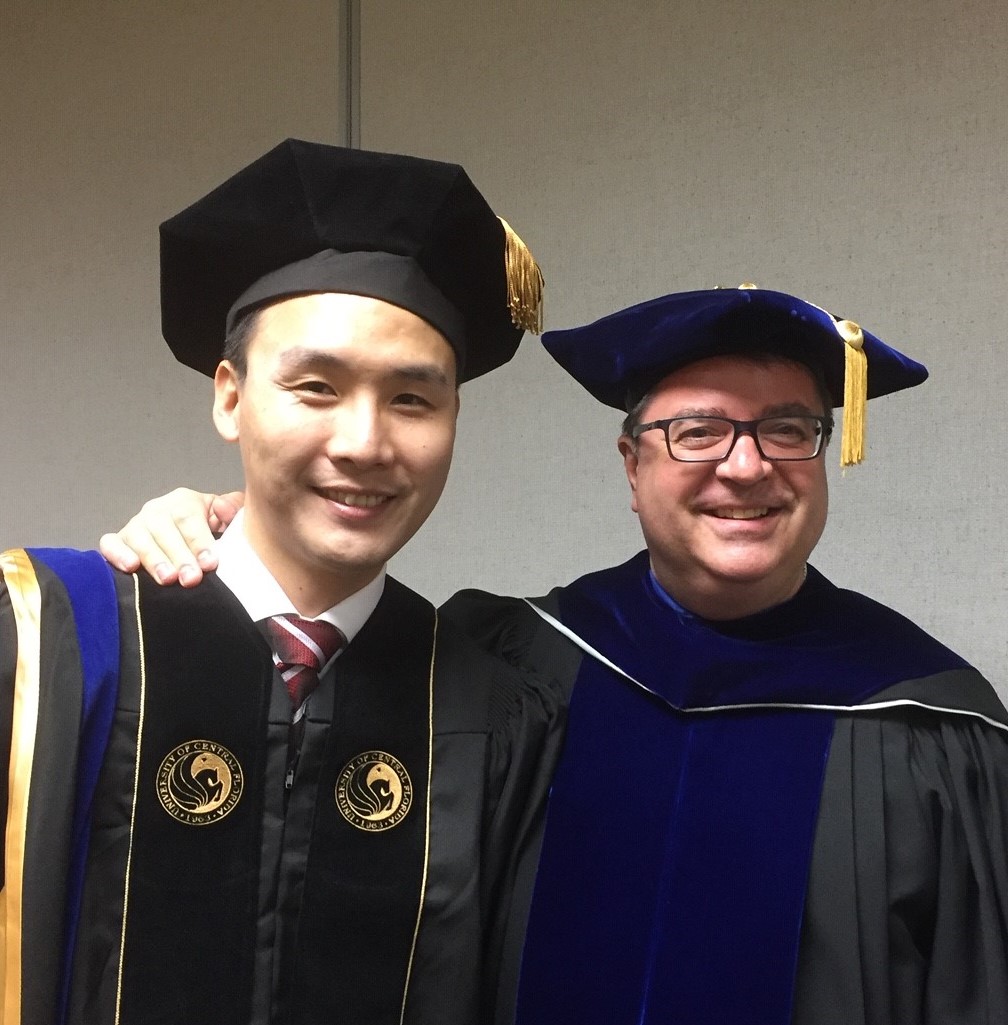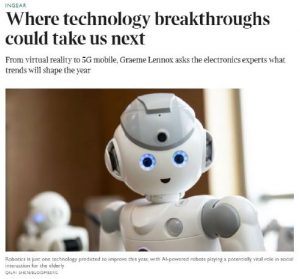FINAL ORAL EXAMINATION
OF
Jason Hochreiter
BS, University of Central Florida, 2011
MS, University of Central Florida, 2014
for the degree of
DOCTOR OF PHILOSOPHY
IN COMPUTER SCIENCE
June 24, 2019, 11:00 AM
Partnership III 233
Dissertation Committee:
Dr. Gregory Welch, Chairman welch@ucf.edu
Dr. Juan Cendan Juan.Cendan@ucf.edu
Dr. Laura Gonzalez Laura.Gonzalez@ucf.edu
Dr. Joseph LaViola Jr. jjl@cs.ucf.edu
Dr. Gerd Bruder Gerd.Bruder@ucf.edu
DISSERTATION RESEARCH IMPACT
The flat screens of today’s smartphones allow for integrated electronic touch sensing. Such electronic touch sensing methods are impractical to implement on non-planar rear-projection displays. This dissertation introduces a generalizable camera-based method for touch input on such rear-projection displays, allowing for touch interactions with complex virtual content registered to the surfaces. In a human-subject study, we demonstrate several advantages of this paradigm compared to others, including improved touch performance and decreases in cognitive load. We are particularly inspired by patient care: despite the importance of touch for both diagnostic and therapeutic purposes, modern high-fidelity mannequins and other patient simulators are typically unable to naturally respond to touch input, which can limit the effectiveness of training. Our research focuses on supporting touch input in a general way, making it suitable for patient simulation and other applications.
SELECTED PUBLICATIONS & PATENTS
Touch sensing on non-parametric rear-projection surfaces: A physical-virtual head for hands-on healthcare training, Jason Hochreiter, Salam Daher, Arjun Nagendran, Laura Gonzalez, Greg Welch, in Proceedings of IEEE Virtual Reality, 2015.
Optical touch sensing on non-parametric rear-projection surfaces for interactive physical-virtual experiences, Jason Hochreiter, Salam Daher, Arjun Nagendran, Laura Gonzalez, Greg Welch, in Presence: Teleoperators and Virtual Environments, 2016.
A systematic survey of 15 years of user studies published in the intelligent virtual agents conference, Nahal Norouzi, Kangsoo Kim, Jason Hochreiter, Myungho Lee, Salam Daher, Gerd Bruder, Greg Welch, in Proceedings of the 18th ACM International Conference on Intelligent Virtual Agents, 2018.
Physical-virtual agents for healthcare simulation, Salam Daher, Jason Hochreiter, Nahal Norouzi, Laura Gonzalez, Gerd Bruder, Greg Welch, in Proceedings of the 18th ACM International Conference on Intelligent Virtual Agents, 2018.
Cognitive and touch performance effects of mismatched 3D physical and visual perceptions, Jason Hochreiter, Salam Daher, Gerd Bruder, Greg Welch, in Proceedings of IEEE Virtual Reality, 2018.
Optical touch sensing on non-parametric rear-projection surfaces, Jason Hochreiter, in Proceedings of IEEE Virtual Reality, 2018.
Patents:
2014, System for Detecting Sterile Field Events and Related Methods, 9808549B2
DISSERTATION
Multi-touch detection and semantic response on non-parametric rear-projection surfaces
Modern interfaces supporting touch input are ubiquitous. Typically, such interfaces are implemented on integrated touch-display surfaces with simple geometry that can be mathematically parameterized, such as planar surfaces and spheres; for more complicated non-parametric surfaces, such parameterizations are not available. In this dissertation, we introduce a method for generalizable optical multi-touch detection and semantic response on uninstrumented non-parametric rear-projection surfaces using an infrared-light-based multi-camera multi-projector platform.
In this paradigm, touch input allows users to manipulate complex virtual 3D content that is registered to and displayed on a physical 3D object. Detected touches trigger responses with specific semantic meaning in the context of the virtual content, such as animations or audio responses. The broad problem of touch detection and response can be decomposed into three major components: determining if a touch has occurred, determining where a detected touch has occurred, and determining how to respond to a detected touch. Our fundamental contribution is the design and implementation of a relational lookup table architecture that addresses these challenges through the encoding of coordinate relationships among the cameras, the projectors, the physical surface, and the virtual content. Additionally, we present and evaluate two algorithms for touch detection and localization utilizing the lookup table architecture.
We demonstrate touch-based interactions on several physical parametric and non-parametric surfaces, and we evaluate both system accuracy and the accuracy of typical users in touching desired targets on these surfaces. In a formative human-subject study, we present an exploratory application of this method in patient simulation. A second study highlights the advantages of touch input on content-matched physical surfaces achieved by our method, such as decreases in induced cognitive load, increases in system usability, and increases in user touch performance.
SELECTED AWARDS & HONORS:
2012, UCF Presidential Doctoral Fellowship
2018, IEEE Virtual Reality Doctoral Consortium
2018, Graduate Travel or Presentation Fellowship
Jason Hochreiter: Defense Announcement




